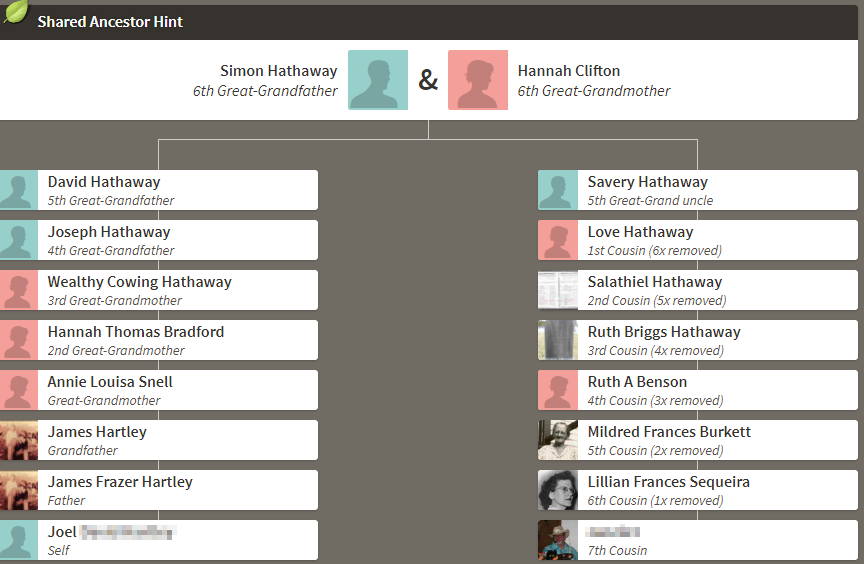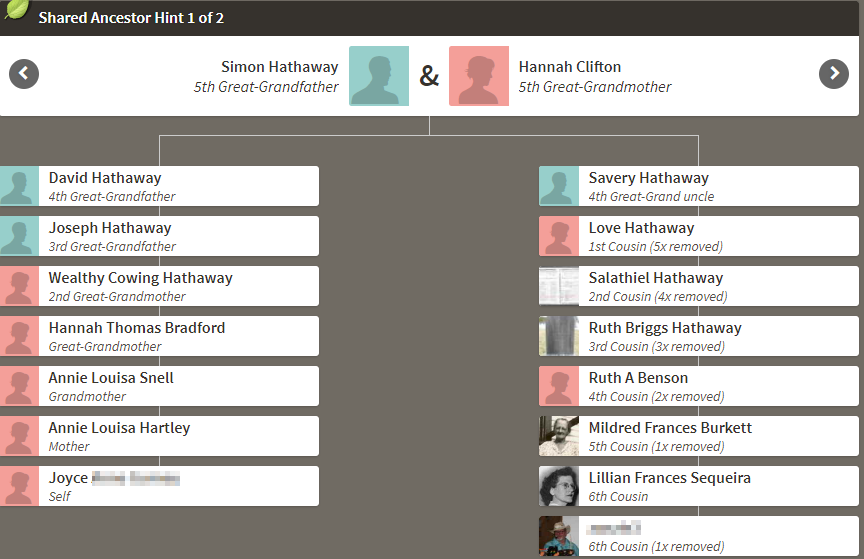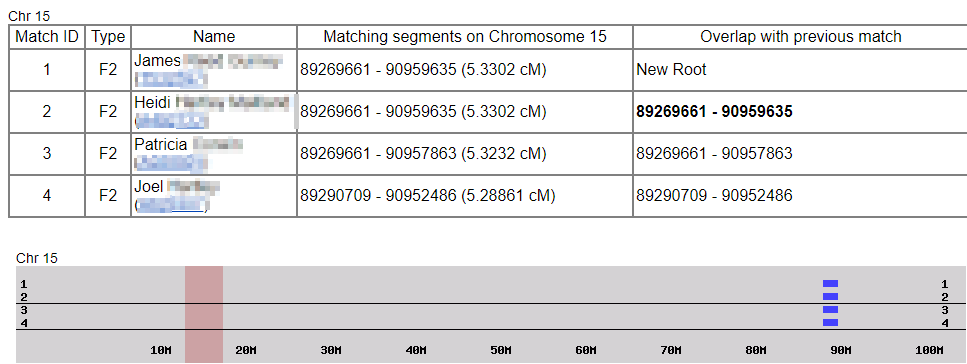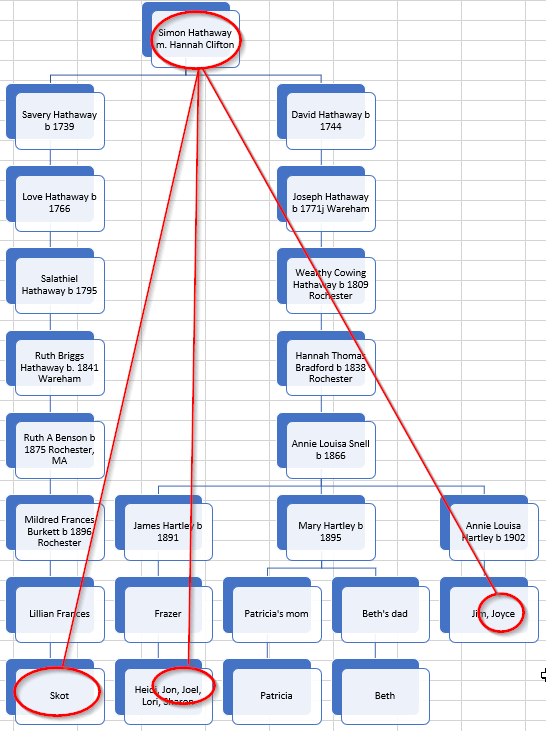Last year I wrote a Blog about Skot and a small match we had of DNA. We showed up as a Shared Ancestor Hint at AncestryDNA. I had known Skot in high school and remember him playing drums in the band and going to some get-togethers that I was at with mutual friends. So we were both surprised that we were distantly related.
Skot in Review
I have 49 Shared Ancestor Hints (SAHs). Ancestry has a computer program that compares your ancestral trees. If you have a shared ancestor within a certain range and a DNA match, then you get an SAH. Here is my match with Skot at AncestryDNA:
Here we show as 7th cousins. Ancestry goes as far back as 10 generations for these SAHs.
Skot also matches my father’s first cousin Joyce that I had tested since I wrote the last Blog. Here Joyce is a 6th cousin once removed to Skot which makes sense as she is one generation to the common ancestors:
However, note that Joyce has a second Hint:
Joyce is also 8th cousin to Skot. Perhaps that is where Ancestry’s 10 generations come in if you count yourself as the first generation. This match would go back to the 1650’s. We are talking old. However, it isn’t quite that old. Note that Joyce and Skot both share a common ancestor of Arthur Hathaway, so they should be 7th cousins. Actually, Simon and Thomas Hathaway had different mothers, so that means that Joyce and Skot are half 7th cousins on this line.
Joyce and Skot at Gedmatch – Chromosome 10
Here is how Joyce and Skot match at Gedmatch on Chromosome 10:
Here is how Skot matches my brother and me and Joyce on Chromosome 10:
More Matches on Chromosome 15
It is not advised to go below 7 cM with matches, but I made an exception in this case:
Below 7 cM, there is a large likelihood that a match could be false. My reasoning here is how could all these matches be false? These are from three different families. Jim is Joyce’s brother, Heidi is my sister. Pat is a second cousin. Then there is me. Next I’ll do something tricky. Thanks to Martin MacNeill, I have a synthetic file of my grandfather’s reconstructed DNA. I will run this against Skot and other relatives:
This is how my grandfather matches:
- Me
- My sister Lori
- My second cousin Beth
- My second cousin Patricia
- Joyce’s brother James, my 1st cousin once removed
- My sister Heidi
- My brother Jon
- Skot
Scanning up from Skot, you can see he will match me, my sister Lori, my second cousin Patricia, Jim and my sister Heidi. It looks like I missed Lori in my previous figure.
A Hathaway Tree
This is the Hathaway Tree with the matches from Chromosome 10:
This looks like a Triangulation Group (TG).
Here are the Chromosome 15 matches:
Here the matches were smaller, but there were more people in the match group or TG. I have other Hartley cousins that did not match Skot from the Grace Hartley Line.
These TGs shows in the images above are very tall. It would be better to have people part way up the tree to verify these. Here is another SAH that Joyce has:
This person has an ancestor not quite as far out. He would be Joyce’s 5th cousin, once removed. If this person uploaded his results to Gedmatch, we may have more confirmation of the Hathway match.
In my last Blog on the subject, I found people that triangulated on Chromosome 10 with other ancestors and not this Hathaway couple. For that reason, I could not be sure that my match with Skot was actually a Hathaway match. Now I do have a triangulations on Chromosomes 10 and 15 that shows Hathaway as a common ancestor. That could mean one or more of several things:
- One or more of the genealogies could be wrong
- There is a common TG to a common ancestors, but we haven’t figured out who that is yet
- Some of the matches in the TG may not be real matches as they are small
- The TGs may be going back in time to a common pattern for a shared common type of group ancestor – say pilgrim ancestors in general.
Summary and Conclusions
- Looking at the test results for Joyce has given more certainty that some of the smallish matches with Skot could indicate colonial Hathaway DNA
- Results from closer Hathaway matches would help confirm that.
- Triangulation is a good tool, but when it gets down to small matches and distant relationships, it can be difficult to interpret.
- Triangulation is also difficult when there are different lines of ancestry that are possible. For example, the early prigrims had a small gene pool to choose from so there were many cousin marriages in the colonial days.










